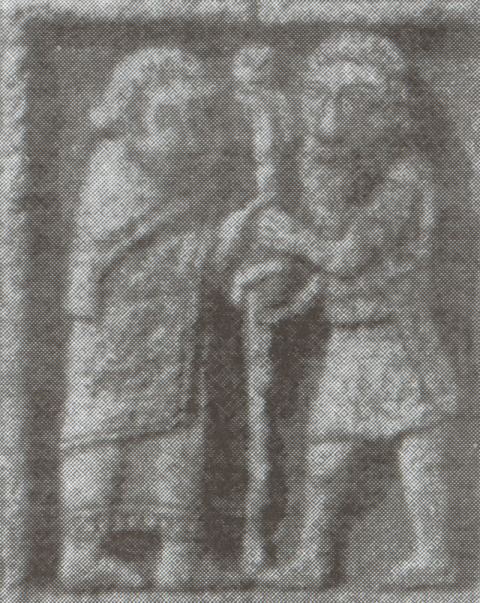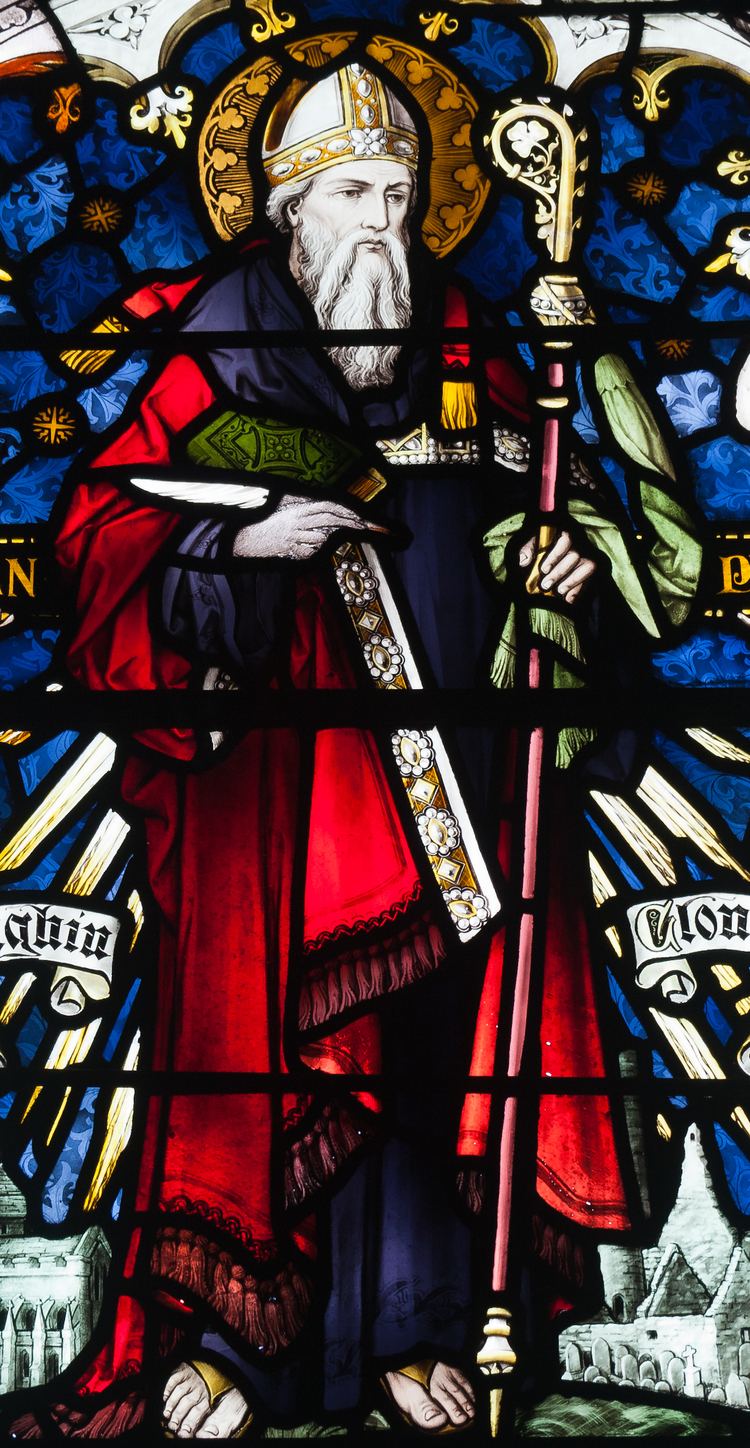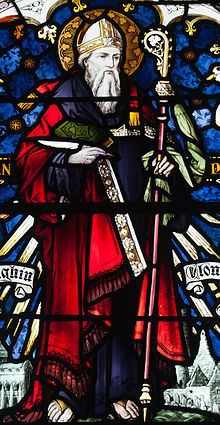Feast 9 September Name Ciaran Clonmacnoise | Role Saint | |
 | ||
Died 546 AD, Clonmacnoise, Republic of Ireland | ||
Saint ciaran of clonmacnoise september 9
Saint Ciarán of Clonmacnoise (c. 516 – c. 549), supposedly born Ciarán mac an tSaeir ("son of the carpenter")), was one of the Twelve Apostles of Ireland and the first abbot of Clonmacnoise. He is sometimes called Ciarán the Younger to distinguish him from the 5th-century Saint Ciarán the Elder who was bishop of Osraige. His name produced many variant spellings, including Ceran, Kieran and Queran.
Contents
- Saint ciaran of clonmacnoise september 9
- An offering at the holy well of saint ciaran of clonmacnoise
- Life
- Legends
- Legacy
- Ciar n of clonmacnoise
- References
An offering at the holy well of saint ciaran of clonmacnoise
Life

Ciarán was born in around 516 in County Roscommon, Connacht, in Ireland. His father was a carpenter and chariot maker. As a boy, Ciarán worked as a cattle herder.

He was a student of Finian's at Clonard and in time became a teacher, himself. Columba of Iona said of Ciarán, “He was a lamp, blazing with the light of wisdom.” In about 534, he left Clonard for Inishmore where he studied under Enda of Aran, who ordained him a priest and advised him to build a church and monastery in the middle of Ireland. Later, he travelled to Senan on Scattery Island (in about 541). In 544, he finally settled in Clonmacnoise, where he founded the Monastery of Clonmacnoise with ten fellow companions. As abbot, he worked on the first buildings of the monastery; however, he died about seven months later of a plague, in his early thirties. His feast day is 9 September.
Legends

Various legends are connected to St Ciarán. One of the most famous relates that it was his cow – which he took with him as payment when he went to Clonard and gave milk to all at the Abbey – which supplied the parchment for the Leobr na h'Uidre, Book of the Dun Cow, one of the oldest and most important Irish literary collections, compiled by a Clonmacnoise scribe in 1106.
One story tells that he lent his copy of the Gospel of St Matthew to fellow-student St Ninnidh. When Finnian tested the class, Ciarán knew only the first half of the Gospel. The other students laughed and called him “Ciarán half-Matthew.” St Finnian silenced them and said, “Not Ciarán half-Matthew, but Ciarán half-Ireland, for he will have half the country and the rest of us will have the other half.”
Another tale relates that as a student, a young fox would take his writings to his master, until it was old enough to eat his satchel. Yet another tale tells of the other Irish saints envying him to such a degree that every one of them (apart from St Columba) prayed for his early death; and finally, he is supposed to have told his followers that upon his death, they were to leave his bones upon the hillside, and to preserve his spirit rather than his relics.
Legacy
The monastery at Clonmacnoise became one of the most important centres of learning and religious life in Ireland. Unusually, the title of abbot – which included the title "Comarba of Saint Ciarán" – at the community was not hereditary, which reflected the humble origins of its founder. It managed to survive the plunderings of the Viking raids and the Anglo-Norman wars, and was only destroyed during the Dissolution of the Monasteries, in 1552. The ruins still exist, and remain a centre of civic and religious activity to this day.
The treasures of Ciarán's shrine were dispersed throughout the Medieval era; although the Clonmacnoise Crozier still exists and is stored in the National Museum of Ireland.
A primary school in Hartstown, Dublin 15 is named after Saint Ciarán.
